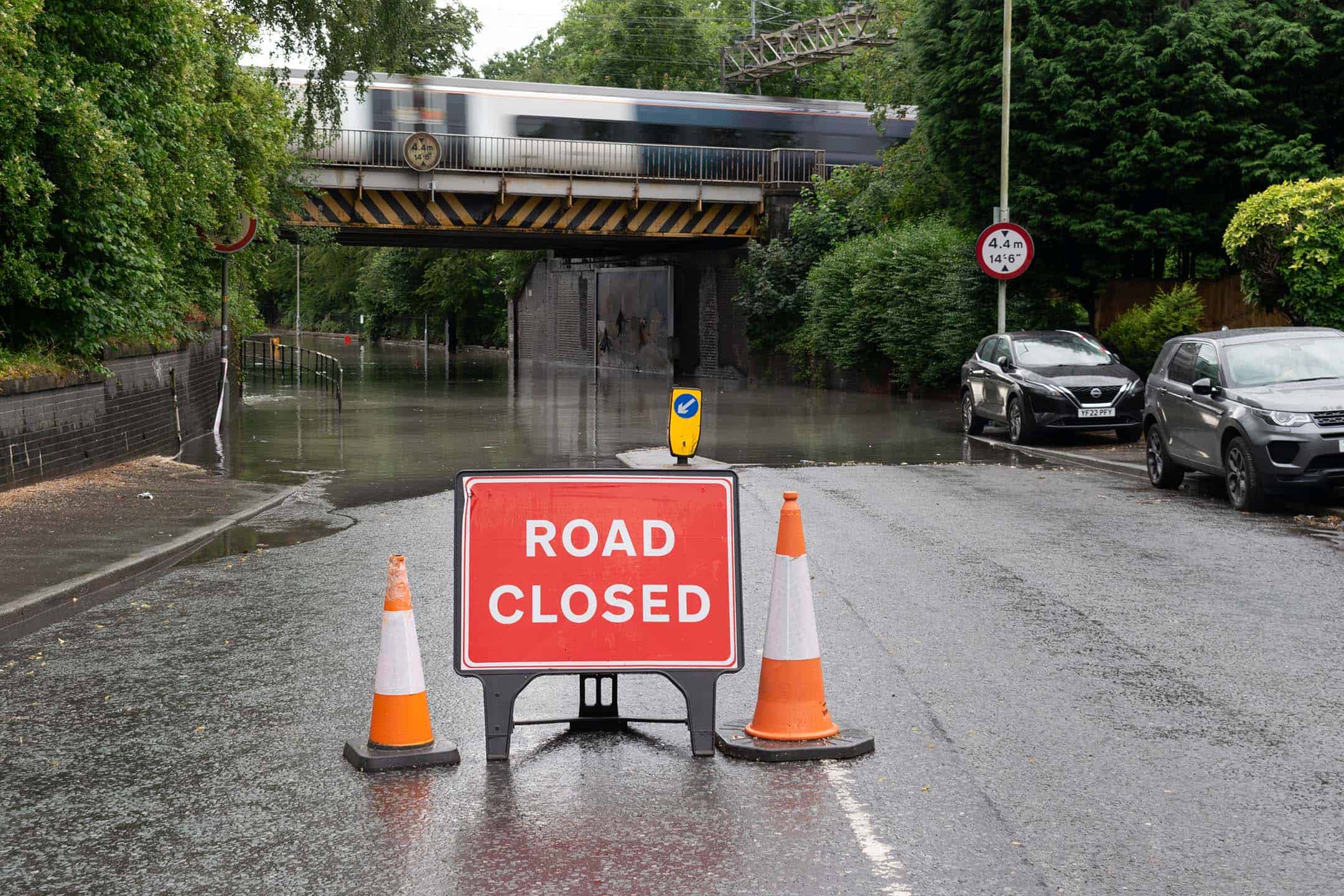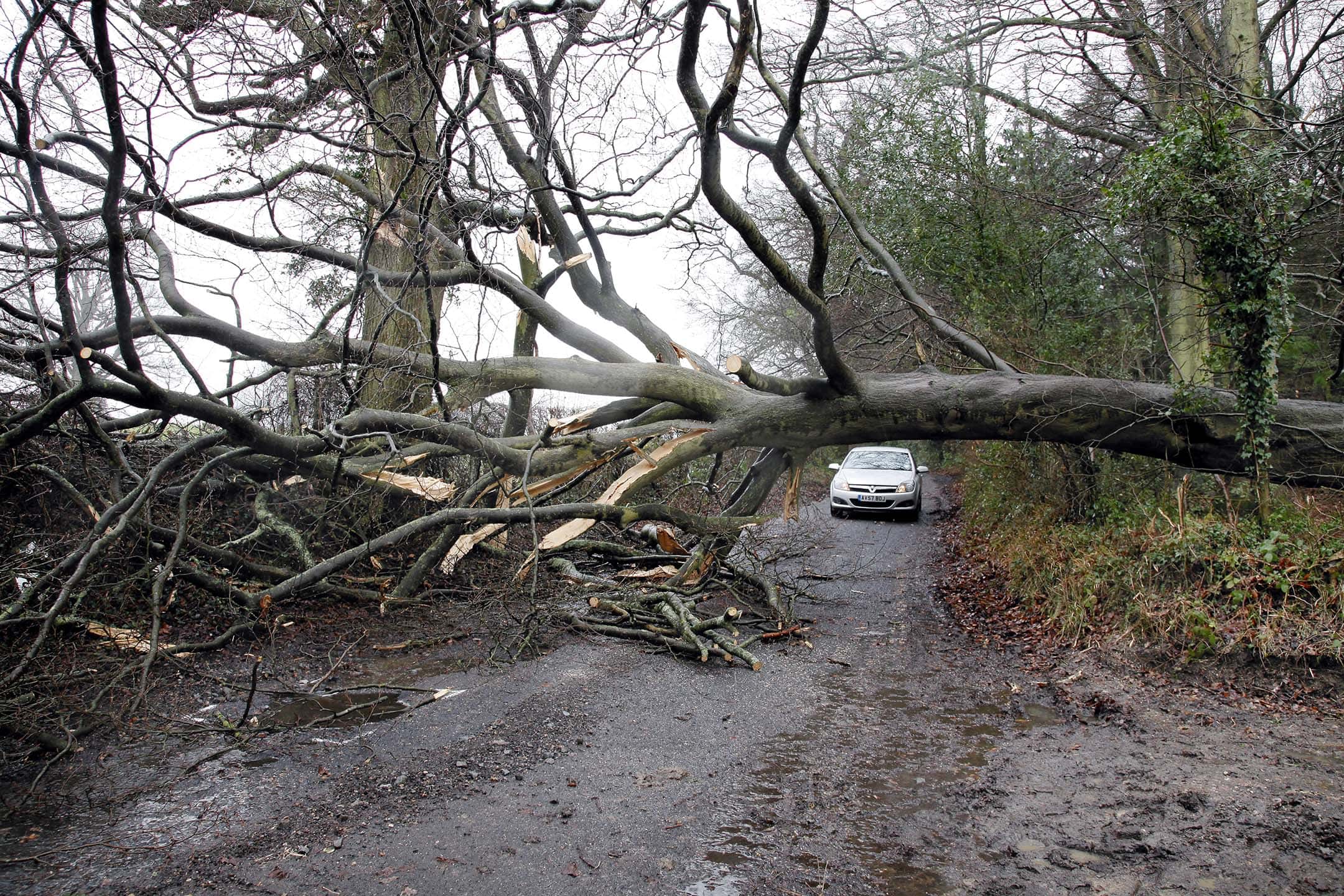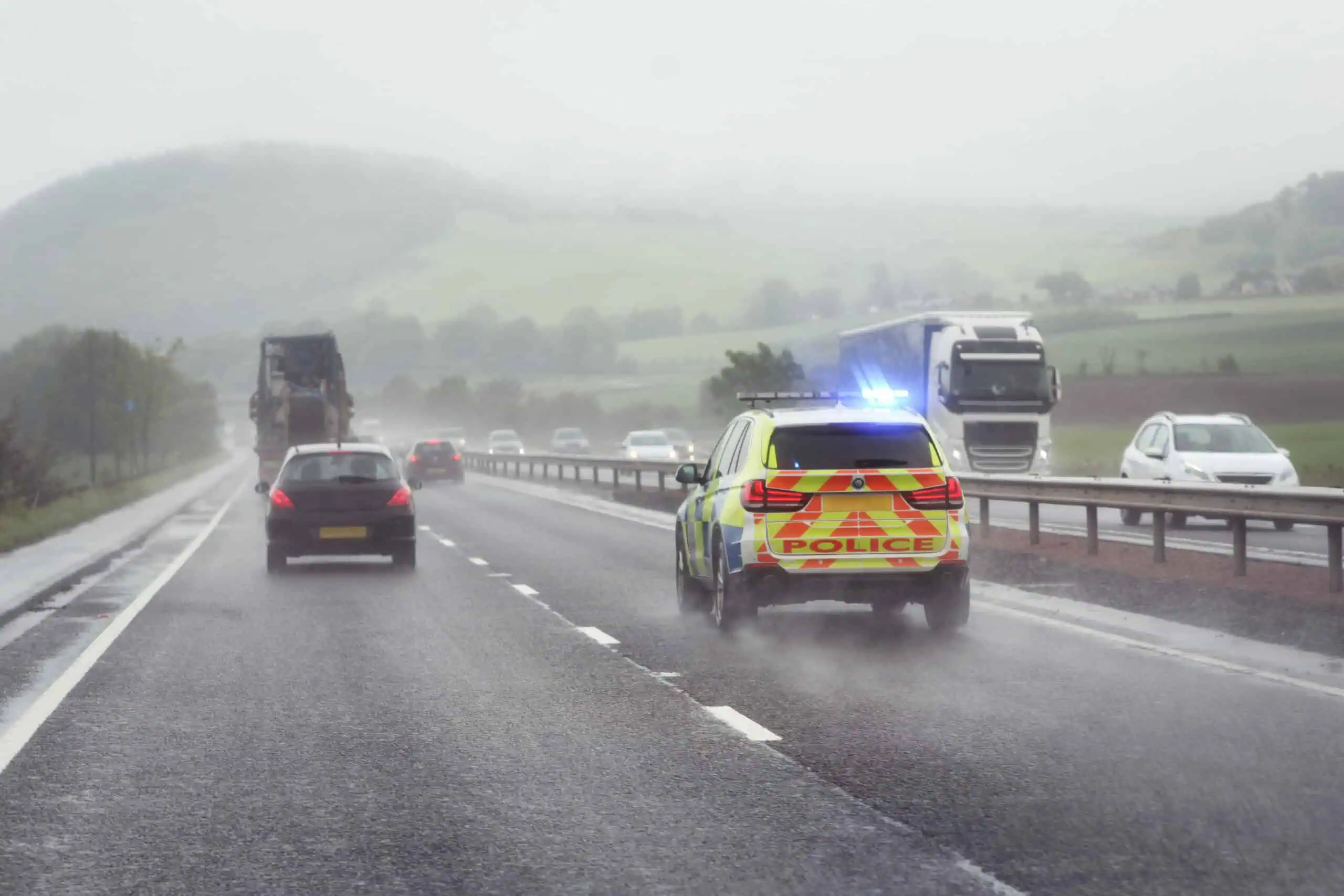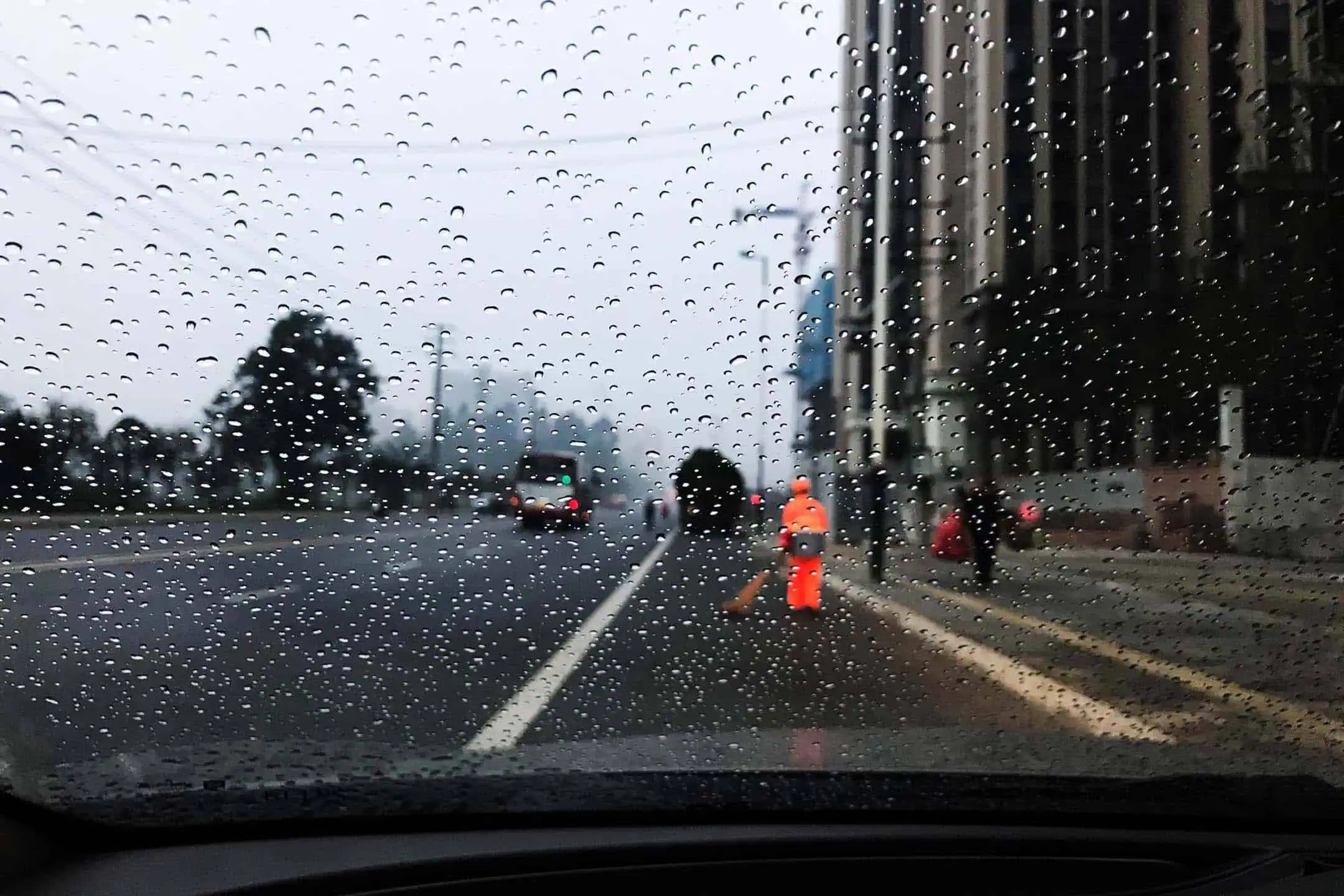Driving in heavy rain
Roads
Vulnerable Users
Driving Law
Breakdowns
Driving Menu
Be careful with torrential rainfall!
The roads will be slippery, your stopping distance drastically increased, and your visibility reduced significantly.
For severe weather warnings
Before you travel in harsh weather conditions, keep up to date with the latest weather conditions.
- Met Office – for all weather warnings
- Environment Agency – for all flood-related warnings
Drive to suit the conditions
Drive slower and leave more distance between you and the car in front.
Remember stopping distances are significantly higher on wet roads.


Windscreen and wipers
Driving during heavy rain you need maximum visibility, check the condition of your windscreen wipers and replace them if worn or damaged.
Dipped headlights
When driving in heavy rain, you must use your dipped headlights when the visibility is less than 100 metres (by the Highway Code).
The use of front fog lights can also be useful but using rear fog lights could mask your brake lights and dazzle drivers behind you.
Hey did you know?
New tyres are capable of dispersing up to 30 litres of water a second at 50 miles per hour. But the depth of the tyre tread wears down over the course of regular usage. Consequently, tyres disperse significantly less water as the depth of the tyre tread decreases.
Standing water
If you drive too fast through standing water, you could cause your tyres to lose contact with the road, and the car might start to aquaplane. To rectify this, you need to ease off the accelerator – do not break. Allow your speed to reduce until you gain full control of the steering again.
Spray from other vehicles
Be aware of both large and fast-moving traffic that could create excessive spray and affect your visibility.


Other road users
Be thoughtful other road users especially pedestrians and cyclists when driving through water and try to avoid spraying them with water.
If you break down
If you are unlucky enough to break down in the extreme rain while waiting for assistance you need to keep the bonnet closed to avoid the electrical system getting soaked.
Warning!
The Highway Code says that stopping distances will be at least double in wet weather compared top dry conditions, because your tyres will have less grip on the road.
You need to reduce your speed and leave more distance between your car and the vehicle in front to account for greater stopping distances – remember the two-second rule?
Increase it to four if it begins to pour.